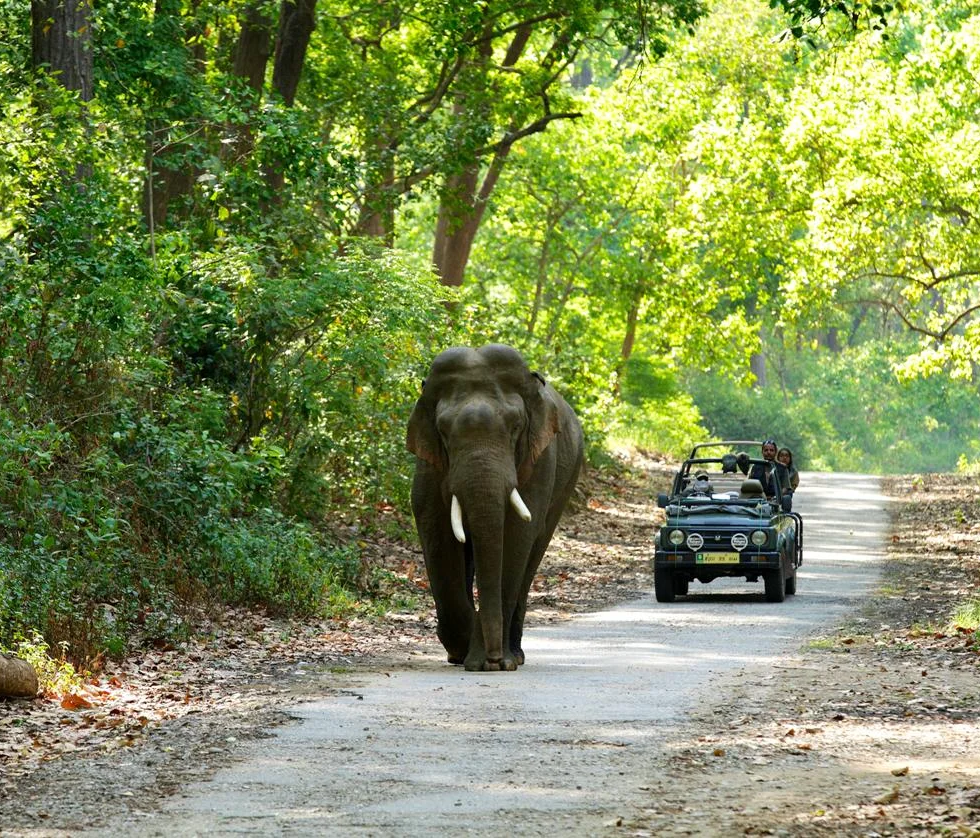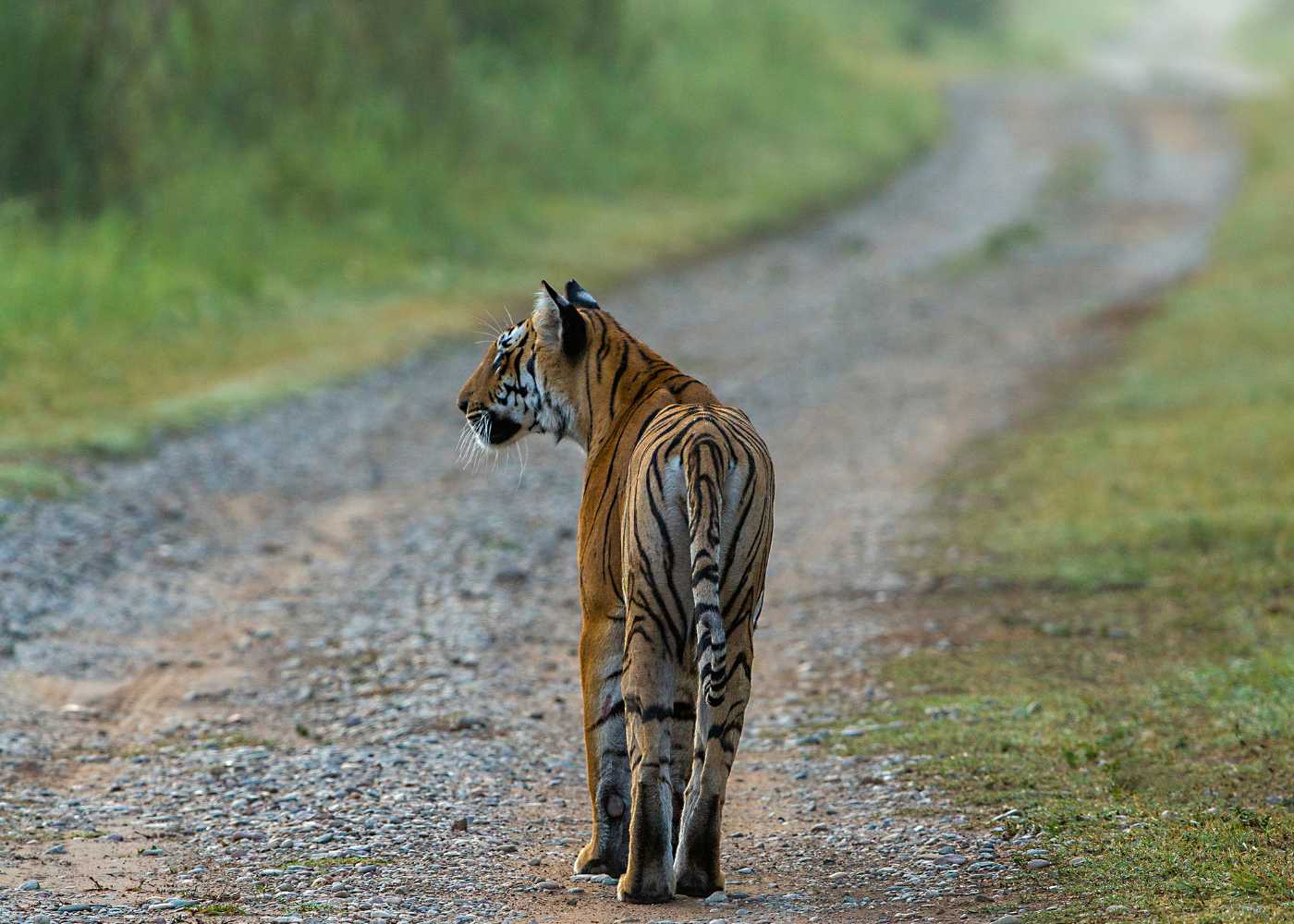Jim Corbett National Park
Published on August 30, 2025
Jim Corbett National Park – India’s First and Most Famous Wildlife Sanctuary
Nestled in the foothills of the Himalayas in Uttarakhand, Jim Corbett National Park is more than just a protected forest — it’s a living, breathing wilderness where nature still rules. Established in 1936 as Hailey National Park and later renamed after the legendary hunter-turned-conservationist Jim Corbett, it is India’s first national park and a proud part of the country’s conservation history. Today, it is best known as the first home of Project Tiger, launched in 1973 to protect India’s majestic tigers.
What Makes Jim Corbett National Park Special?
Jim Corbett is not just a jungle where animals live — it’s an extraordinary mix of dense forests, open grasslands, twisting rivers, and rolling hills. Spread over 1,300 square kilometers, the park shelters:
-
Tigers, leopards, and wild elephants.
-
Deer species like sambar and chital.
-
Over 600 species of birds, from bright kingfishers to soaring eagles.
-
Reptiles like crocodiles and gharials along its rivers.
This incredible variety of habitats makes Corbett a paradise for wildlife lovers, photographers, birdwatchers, and adventure seekers.

A Brief History
-
1936: Established as Hailey National Park by British officials to protect Bengal tigers.
-
1957: Renamed Corbett National Park to honor Jim Corbett, who hunted man-eating tigers but later dedicated his life to saving wildlife.
-
1973: Became India’s first Project Tiger reserve.
Jim Corbett himself believed in protecting the forest and its animals long before wildlife conservation became popular. His writings and photographs captured the beauty of this land, inspiring generations to respect nature.
The Beautiful Landscapes of Corbett
Jim Corbett National Park is divided into zones, each with its own scenery and wildlife:
-
Dhikala Zone: The largest and most famous zone, known for tiger sightings and stunning views of grasslands and rivers.
-
Bijrani Zone: Rich in wildlife with beautiful sal forests — a favorite among photographers.
-
Jhirna Zone: Open all year round and famous for sloth bears and elephants.
-
Durga Devi Zone: Hilly terrain, perfect for birdwatching.
-
Garjia and Dhela Zones: Peaceful, less crowded zones with mixed forest landscapes.
Outside these zones lies the Corbett Landscape area, where rivers like the Kosi and Ramganga flow peacefully, offering breathtaking scenery.
Wildlife You May See
-
The Bengal Tiger: The star attraction — though spotting one is rare and thrilling.
-
Leopards: More elusive but sometimes seen near hill slopes.
-
Asian Elephants: Often spotted in herds near rivers or waterholes.
-
Deer and Antelopes: Sambar, chital, and barking deer are common sightings.
-
Birds: Eagles, parakeets, woodpeckers, hornbills, and seasonal migratory species.
-
Reptiles: Crocodiles, gharials, and monitor lizards near riverbanks.
Safari Experience in Jim Corbett
The best way to explore Corbett is through jeep safaris or canter safaris in designated zones.
-
Jeep Safari: Fast, flexible, and available in most zones. Perfect for small groups and photography.
-
Canter Safari: Larger open vehicle used mostly in Dhikala zone, suitable for big groups.
Morning safaris start early when the jungle is cool and animals are active. Evening safaris offer golden sunlight and calm surroundings.
Elephant safaris used to be very popular for a slow, elevated ride, but they are now limited to special areas to protect animal welfare.
Staying Inside vs. Outside the Park
-
Forest Rest Houses (FRHs): Located inside the park — like Dhikala, Gairal, and Bijrani lodges — these offer a rare chance to stay deep inside the forest. Bookings are limited and must be made months in advance.
-
Resorts and Lodges Outside the Park: The Corbett Landscape and surrounding villages have beautiful eco-resorts and homestays with views of rivers and forests. These are easier to book and more comfortable for families.
Best Time to Visit
-
Winter (October to February): Pleasant weather, misty mornings, and great chances to see wildlife.
-
Summer (March to June): Hot afternoons but animals gather near water, improving sightings.
-
Monsoon (July to September): Lush and green, but most zones are closed due to heavy rains. Only Jhirna and Dhela zones remain open.
Tips for Visiting Jim Corbett
-
Book early: Safari permits and forest stays sell out quickly.
-
Carry ID proof: Mandatory for entry.
-
Wear earthy colors: Greens, browns, and khakis blend well with the jungle.
-
Stay quiet inside the forest: Loud noise disturbs animals.
-
Bring binoculars and cameras: For birdwatching and photography.
-
Do not litter or feed animals: Help keep the forest clean and safe.
More Than Just Wildlife
Jim Corbett National Park is not only about tigers. Its charm lies in its natural rhythm — the call of birds at dawn, the rustle of leaves in the wind, and the sight of mist lifting off a river as sunlight streams through.
-
Corbett Museum: Located at Kaladhungi, showcasing Jim Corbett’s life and his contributions to conservation.
-
Garjia Devi Temple: A sacred temple sitting on a large rock in the Kosi River, attracting pilgrims and nature lovers.
-
Corbett Waterfall: A beautiful picnic spot with a peaceful cascade surrounded by dense forest.
-
Riverside Relaxation: The Ramganga and Kosi rivers add a serene touch to the rugged wilderness.
Why Visit Jim Corbett?
-
For adventure: Jungle safaris, nature walks, and river views.
-
For peace: Quiet stays surrounded by forests and hills.
-
For learning: Insights into wildlife conservation and Jim Corbett’s legacy.
-
For beauty: Sal forests, open valleys, and Himalayan foothills that look stunning in every season.
Whether you’re a wildlife enthusiast chasing a tiger sighting, a photographer searching for golden light, or a family looking for a peaceful holiday, Jim Corbett National Park has something for everyone.

The Essence of Jim Corbett
At its heart, Jim Corbett National Park is about respect for nature. It reminds visitors that humans are only guests in the jungle, while animals are its true inhabitants. Here, the air feels fresher, the nights are darker and full of stars, and every sound — from the distant roar of a tiger to the gentle flow of a river — tells a story of the wild.
When you leave Corbett, you don’t just carry photographs. You carry memories of the forest’s silence, the thrill of spotting wild animals, and the deep connection to nature that this magical place gives to everyone who visits.
